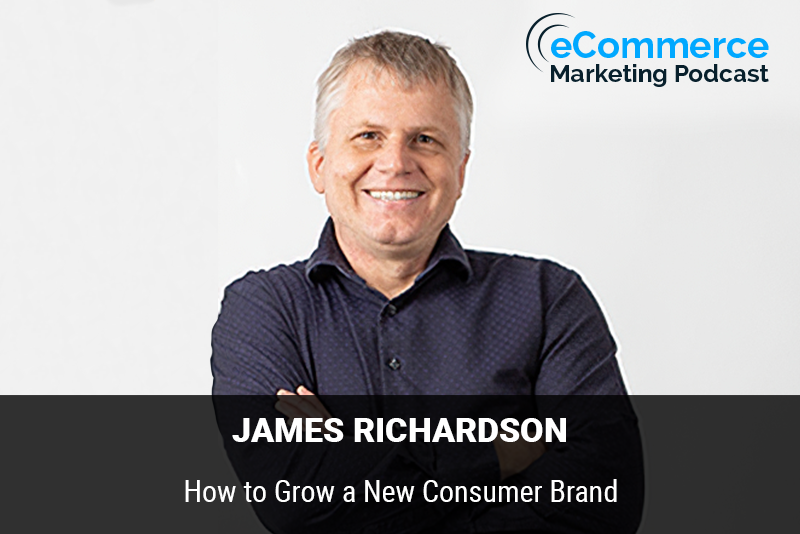
The eCommerce Marketing Podcast walks you through everything that goes into ecommerce marketing — from inbound marketing to paid advertising to conversions. Learn the strategies top marketing experts use to grow their businesses.
Marketing Strategies Revealed in this Episode:
- The primary problem with trying to grow a new consumer brand too quickly
- What’s special about exponential growth for consumer brands
- How to design products that generate exponential growth
- How weird new products can eventually become cool and have explosive growth

Episode Title: Growing Consumer-Packaged Goods Brands with Dr. James Richardson
Host: Arlen Robinson
Guest: Dr. James Richardson, Founder of Premium Growth Solutions
Summary: In this episode of the E-commerce Marketing Podcast, Arlen Robinson talks with Dr. James Richardson, a cultural anthropologist turned business strategist and founder of Premium Growth Solutions. Dr. Richardson shares his insights on how consumer-packaged goods (CPG) brands can achieve sustainable growth. He discusses the common pitfalls brands face, the importance of strategic planning, and how to iterate products based on consumer feedback. He also explains why brands should avoid premature PR and focus on authentic growth.
Key Takeaways:
- Introduction and Background [00:00]
- Dr. Richardson’s journey from cultural anthropology to strategic planning for CPG brands [02:00].
- The transition from market research to business strategy and consulting for major brands like Coca-Cola and General Mills [05:00].
- Challenges in Growing CPG Brands [10:00]
- The danger of assuming a product is “finished” without sufficient consumer feedback [11:00].
- The importance of fine-tuning products based on real-world usage and feedback [13:00].
- Cultural Insights in Product Development [15:00]
- How unconscious cultural identities influence consumer decisions [16:00].
- The risk of projecting narrow personal assumptions onto a broader market [18:00].
- Achieving Exponential Growth [20:00]
- The significance of exponential growth as a signal of true innovation [22:00].
- How small, strategic growth can help brands refine their products and operations before scaling up [24:00].
- The Perils of Premature PR [30:00]
- Why early media exposure can attract unwanted competition [31:00].
- The importance of being strategic about when and how to seek PR [33:00].
- Consumer Behavior and Product Positioning [35:00]
- How to avoid alienating potential customers with overly niche or “weird” products [36:00].
- Case studies of brands that successfully transitioned from niche to mainstream [38:00].
- Adapting to Market Trends [40:00]
- Examples of products like Greek yogurt that shifted from niche to mainstream due to changing consumer preferences [42:00].
- The role of continuous iteration and market adaptation in long-term success [44:00].
Guest Info:
- Name: Dr. James Richardson
- Position: Founder of Premium Growth Solutions
- Website: Premium Growth Solutions
- LinkedIn: Dr. James Richardson











